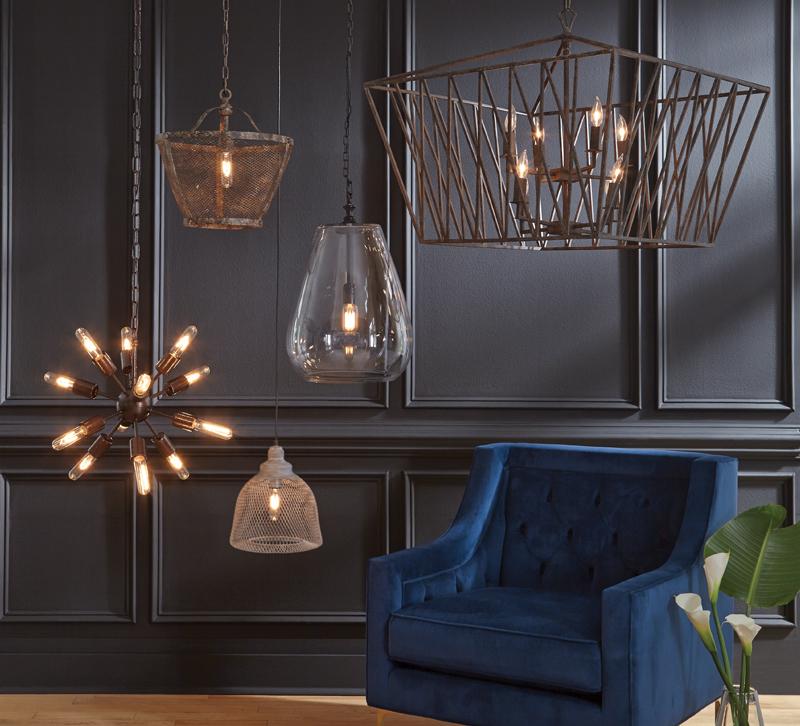Ever since the retail apocalypse/renaissance (depending on your optimism) hit, the retail industry has whispered about the demise of the brick-and-mortar store and whether or not it will survive into the next generation of shoppers. For those pessimists, there's good news.
Walker Sands' Future of Retail 2017 study found that 43 percent of Millennials (ages 26-35) and 58 percent of Generation Zers (age 18-25) prefer shopping in a physical store. That's good news for lighting and home furnishings retailers.
By now, you may be sick and tired of hearing the word "experience" (don't worry, it also gets tedious to write about unless you have a good subject), but if you want to connect with the next generation of buyers and give your current and previous customers a reason to keep coming back, then you should be thinking of nothing but experiences because that's why customers are choosing some stores over others.
So which experiences specifically do customers want? Here are four factors that Walker Sands identified as driving in-store purchases.
Exclusive discounts
Everyone loves scoring a good deal. It's no surprise that 64 percent of survey consumers said exclusive discounts drive their in-store purchases.
One way to bring customers offline and into your store may be to offer small discounts online and bigger discounts in-store. This serves two types of customers: the one in need of a discount and the one looking to add onto a purchase. Some consumers will have their eye on a big-ticket item such as a sofa or a credenza, but they might not be willing or able to make it into your store. That's okay. If online works, or if they are able to make it to the store, you still get the sale.
There are also those who will take the opportunity to add onto their purchase. They already have one item in mind, but they're open to others. A bigger in-store discount gives them a good reason to come and browse, meet with one of your experts and make a bigger purchase.
You can also use the in-store discount on brands that offer too much customization to be sold well online. This will help alleviate potential mistakes and mishaps with customized furniture. Your customers will feel more confident in their purchase if you speak with them first, and they'll be less likely to return it later. When you announce your sale on your website and social media platforms, briefly explain why this offer is only available in stores. It will clear up questions and get customers excited about their potential options.
Food and beverage offerings
A discount may bring people to a store, but food and beverages will make them stay. More consumers (30 percent of those surveyed) are expecting to nosh a little while shopping, and retailers should take note.
Retailers are already trying to do this. Earlier this year, Miami-based City Furniture announced it would be serving alcohol in its showrooms to better the in-store experience. Restoration Hardware has added cafes to its stores. Last year, Jayson Home in Chicago told us about its beer and brownies event, which encouraged people to come in, have a drink and sit on their furniture.
Simply having a few drink options (water, pop, coffee, etc.) can go a long way to get consumers to stop and relax for a minute. Consider bringing in a mini fridge or a Keurig to help customers feel more at home.
More personalized shopping experience
You're probably thinking this: How can I possibly personalize the experience of a stranger that's just walked into my showroom? Although 18 percent of those surveyed said they wanted a more personalized experience, Walker Sands didn't specify exactly what that means, but based on other research, we can take a good guess.
Last year, customer data platform firm Segment released its State of Personalization report, which found that 71 percent of shoppers were frustrated with an impersonal shopping experience. Personalization simply meant that "the company is monitoring the customer's activity and offering assistance to create a more tailored experience that meets the needs of the customer."
Personalization can happen online with tools like Facebook's Pixel and targeted email marketing, but in-store, it means having knowledgeable sales associates who ask the right questions, listen closely and help the consumer make the most informed decision possible.
Think of it like this: A customer comes in and wants to buy a sofa. Before your associate makes any recommendations, he or she asks a few questions:
- What room will this sofa be in?
- How many people live in the home? What ages are they?
- Will other people be living in the home in the next five to 10 years? Children? Elderly parents?
- Will this sofa be in front of a TV?
- How likely is it that someone will be eating or drinking while sitting on it?
- Are there any pets in the home?
- What other colors and finishes are in the room?
These questions show that your associate is trying to consider all factors before making a recommendation rather than just recommending a best-seller or the most expensive sofa on the floor. It builds trust with the customer and makes them feel better about their purchase.
Live product demonstrations
Tying with personalization, 18 percent of customers said they expect live product demonstrations in stores. If you're a lighting showroom, then this should be a key factor for you.
Smart products have yet to move into the mainstream just yet, and many consumers don't know how to set them up and use them. Your showroom could get them started. By hosting smart lighting demonstrations, you can position your showroom as the must-visit place for all things smart and get consumers excited about the lighting potential in their own homes.
Walker Sands' study found that 24 percent of consumers across age groups had a smart home device in their homes (thermostat, lighting, etc.), but 46 percent of Millennials and 33 percent of Generation Zers (the generation after Millennials) have smart home devices. Considering that the oldest of Gen Z are still in college and don't own homes yet, that's pretty telling.
How are you driving consumers to your store? Share with us in the comments!







